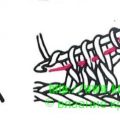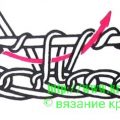Unfinished posts with a common top and bottom
Unfinished posts with a common vertex andbase Unfinished posts are the posts, the knitting of which stops at a certain place for the compilation of the motive, most often it is the posts with a common apex. The basics of crochet knitting include loops using unfinished columns and combining the columns with a common vertex, as well as adding loops by tying several columns into one loop. and we have already dealt with them in detail in previous lessons. And now we will consider such a variant of knitting, in which, despite the fact that several crochets of crochets are added to one loop, there will be no addition of loops in a row, because these will be unfinished posts with a common vertex. The columns having one peak and one base turn out beautiful and voluminous. This method of knitting is used to create three-dimensional crochet patterns or unusual trinkets. The volume crochet pattern can be used for simple products of fantastic beauty. An example of the use of unfinished columns with a common apex and base illustrates a detailed master class: "" Let's start the study! ? Unfinished posts with two naquids 1. We have a loop from the previous row, or a finite loop of a chain of air loops. The considered example is executed on the previous row. 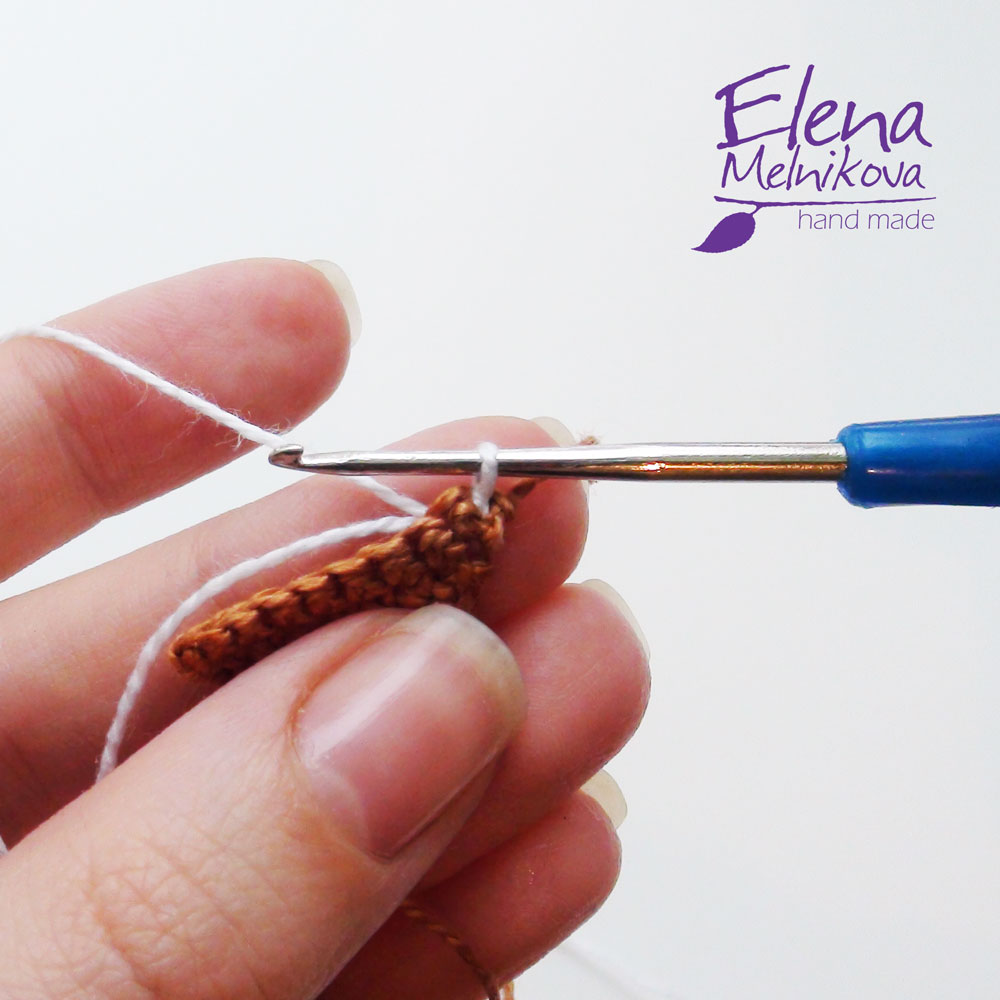 2. Three air loops
2. Three air loops  3. Two nakida
3. Two nakida 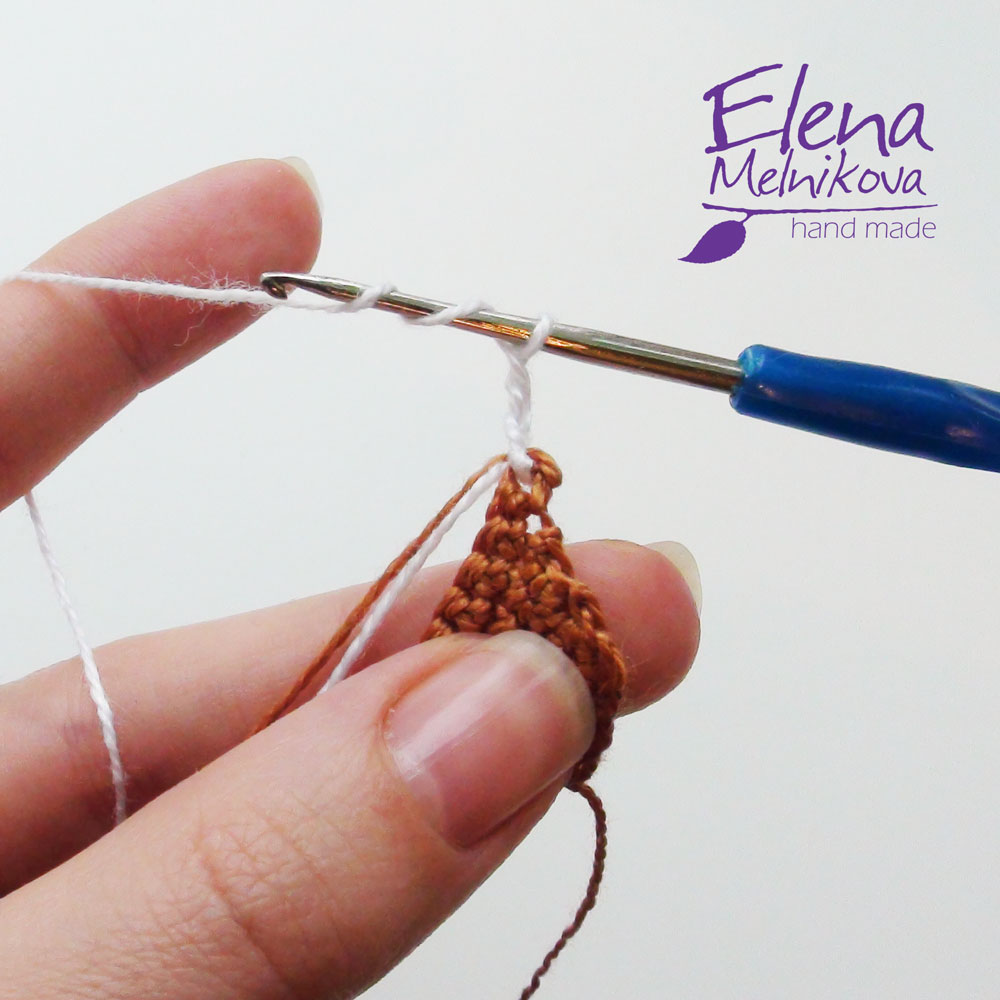 four. Unfinished column with two naquids in the same loop, from which we rise air loops. The unfinished column in our version is alternately knitting loops of two loops. There will be two such pairs - until there are two loops on the hook
four. Unfinished column with two naquids in the same loop, from which we rise air loops. The unfinished column in our version is alternately knitting loops of two loops. There will be two such pairs - until there are two loops on the hook  5. Another unfinished column with two naquids in the same loop. Three loops on the hook
5. Another unfinished column with two naquids in the same loop. Three loops on the hook  6 We close all three loops on the hook and thread the working thread through them. In this way, you and I completed three unfinished columns with one base and one vertex, i.e. there was no subtraction or addition, just a bunch of columns
6 We close all three loops on the hook and thread the working thread through them. In this way, you and I completed three unfinished columns with one base and one vertex, i.e. there was no subtraction or addition, just a bunch of columns  7. In the diagram, the unfinished columns will look as follows. Considered several options, comparing which you will understand, by what principle they differ
7. In the diagram, the unfinished columns will look as follows. Considered several options, comparing which you will understand, by what principle they differ 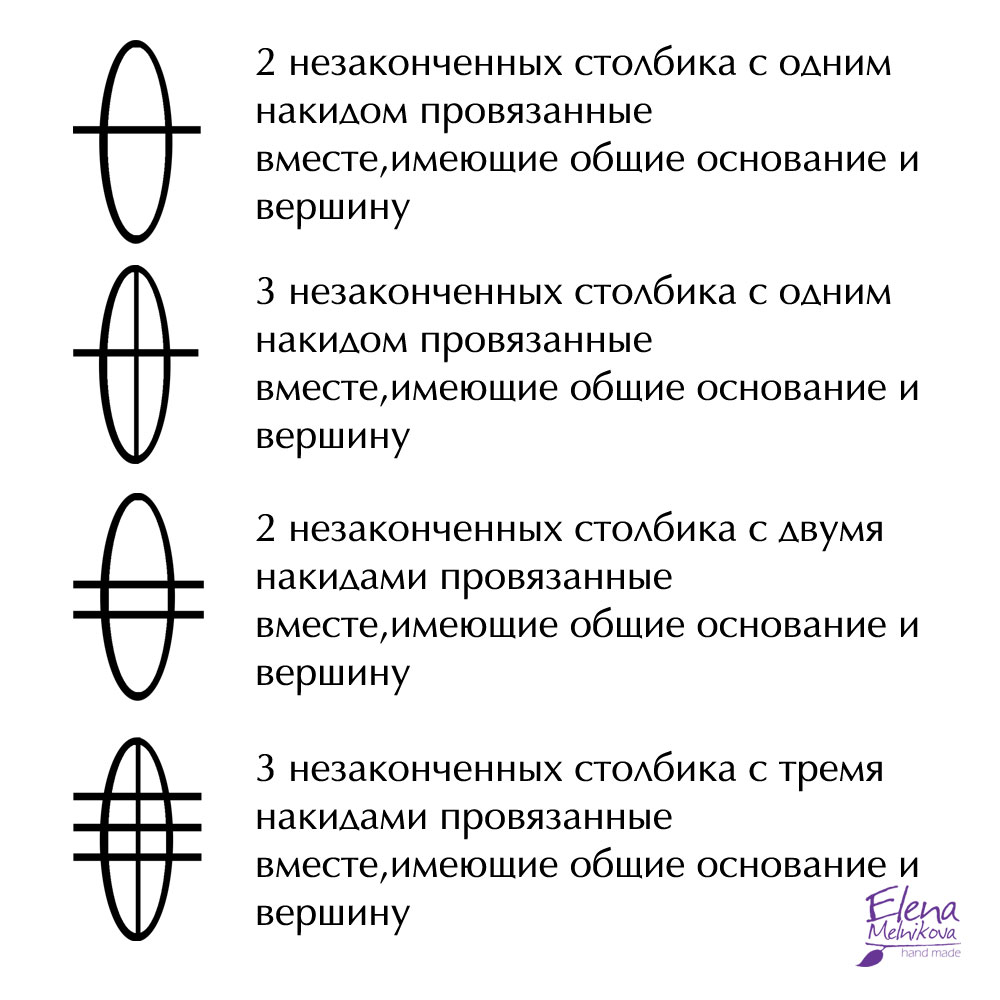 The following series beams correspond to the performedwill be from three unfinished columns with two naquids. Such bundles of columns can be performed not only from three, but also from a larger number of unfinished columns, the main thing is not to overdo it! ? Here is such a wonderful item! ? See you at the new lessons!
The following series beams correspond to the performedwill be from three unfinished columns with two naquids. Such bundles of columns can be performed not only from three, but also from a larger number of unfinished columns, the main thing is not to overdo it! ? Here is such a wonderful item! ? See you at the new lessons!
